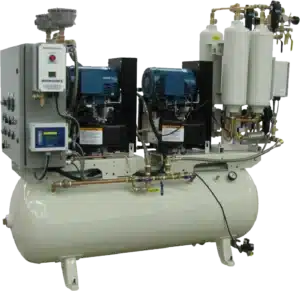Extension manifolds are a type of manifold used in medical gas distribution systems to extend the reach of gas outlets to areas where they are needed. They are designed to provide a centralized point for connecting multiple medical gas outlets, which can be used to supply various medical equipment and devices with gases like oxygen, nitrous oxide, medical air, and vacuum.
Extension manifolds can be installed in various locations throughout a healthcare facility, such as in patient rooms, operating rooms, and other clinical areas. They are typically mounted on the wall or ceiling, and can be connected to the main gas supply source through pipes or hoses.
One of the benefits of using extension manifolds is that they provide greater flexibility in the placement of medical gas outlets, allowing healthcare providers to access gases where they are needed most. This can improve patient care by ensuring that medical equipment and devices are properly supplied with the necessary gases.
Extension manifolds are typically made of durable materials such as brass or stainless steel, which are resistant to corrosion and other forms of damage. They are also designed to meet various industry standards and regulations for medical gas distribution systems, such as those set by the National Fire Protection Association (NFPA) and the Compressed Gas Association (CGA).
It is important to properly install and maintain extension manifolds to ensure their safe and effective operation. This includes regular inspection and testing of the manifold and its associated piping or hoses, as well as following recommended cleaning and disinfection procedures. Any damaged or malfunctioning components should be replaced immediately to prevent potential hazards or equipment failure.
Showing all 4 results




















